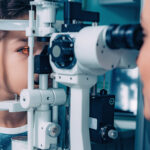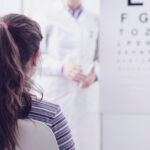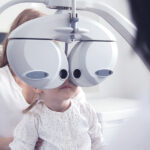Treatment for the vision condition achromatopsia helps Aiden embrace the outdoors

A lot of things excite 10-year-old Aiden Flaherty: drums, soccer, skiing, video games.
But lately, he’s also found joy in a quieter, less active pursuit: watching leaves move on trees. He loves being outdoors during the daytime and taking in all that nature offers. It’s something he only recently could do after receiving retinal gene therapy and wearing specialized sunglasses for an inherited retinal disorder (IRD) that had prevented him from enjoying sunlight.
“That was life-changing,” recalls Aiden’s mom, Emily. “He started to navigate the world a little bit better.”
Pinpointing the rare condition achromatopsia
When Aiden was a baby, his eyes moved involuntarily and rapidly, a condition known as nystagmus. He eventually wore glasses but still squinted frequently. Aside from attending school, he usually preferred to go outdoors only at dusk because sunlight was too bright for him to see with clarity. Conversely, he couldn’t see clearly indoors when lighting wasn’t bright enough. “I just couldn’t find perfect lighting,” he recalls.
After being in the care of other doctors, Aiden started coming to Boston Children’s Department of Ophthalmology in 2014. Dr. Anne Fulton and other ophthalmologists examined his eyes to determine the scope of his vision, sensitivity to light, and structure of his retinas — steps they follow when a child appears to have an IRD. But those kinds of diagnostic tests only confirm signs of an IRD, and those results go only so far. Because there are many types of IRDs, it takes time to pinpoint which one because symptoms can overlap with those of other eye conditions, and symptoms sometimes don’t emerge until later in childhood. That’s why Aiden also underwent genetic testing to definitively confirm if he had an IRD and, if so, which kind.
He was diagnosed with achromatopsia almost seven years ago. It is a rare IRD that causes the symptoms Aiden had: extreme sensitivity to light, limited ability to see colors, and diminished clarity of vision. Fortunately, unlike many IRDs, achromatopsia’s symptoms usually do not worsen over time.
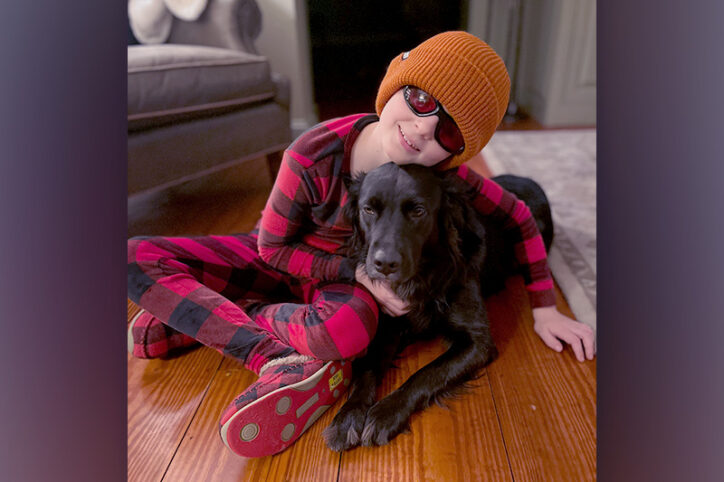
Solutions for improving Aiden’s sight
A diagnosis allowed Aiden’s care team to offer solutions that directly target achromatopsia. First, optometrist Dr. Kathryn Miller suggested Aiden wear red-tinted sunglasses. They not only reduce the glare of light but also filter light to a red hue that improves the function of retinal receptors. It’s similar to how the reddened light of a photography darkroom keeps brightness to a minimum and still allows people to see. Because achromatopsia causes color blindness, Aiden doesn’t notice the red.
The other significant solution was retinal gene therapy in his right eye. An injection placed a copy of a working gene beneath the retina to enable retinal cells to make the necessary protein. The aim was to restore as much of his vision as possible by converting light to electrical signals that can be interpreted by the brain.
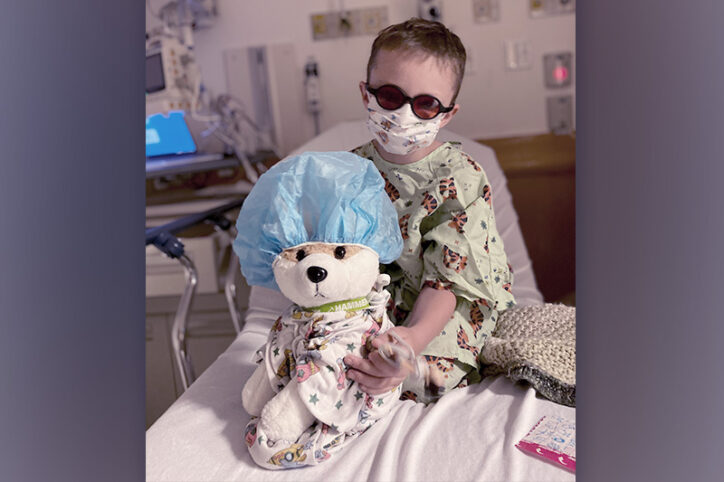
“We talked to him a lot about it and decided that if he wanted to do it, why would we stand in his way?” Emily says. “It is a hard decision to make as a parent, but we were well informed and felt like the benefits would outweigh the risk. We could help improve his quality of life.”
After the procedure, Aiden went home from Boston Children’s and excitedly welcomed a visit from his grandparents. “And that’s when I started to open my eyes a little bit. And then it just got better and better ever since.” Aside from now tolerating sunlight and not struggling as much with dimmer indoor lighting, Aiden has an easier time reading a font size he previously couldn’t see. He also notices he’s not bumping into objects as much.
Throughout it all, Aiden’s family has appreciated the “amazing care, attention, and knowledge” from his Boston Children’s care team. “They are what brought us through this process and helped us to stay positive and optimistic about the future for Aiden,” Emily says.
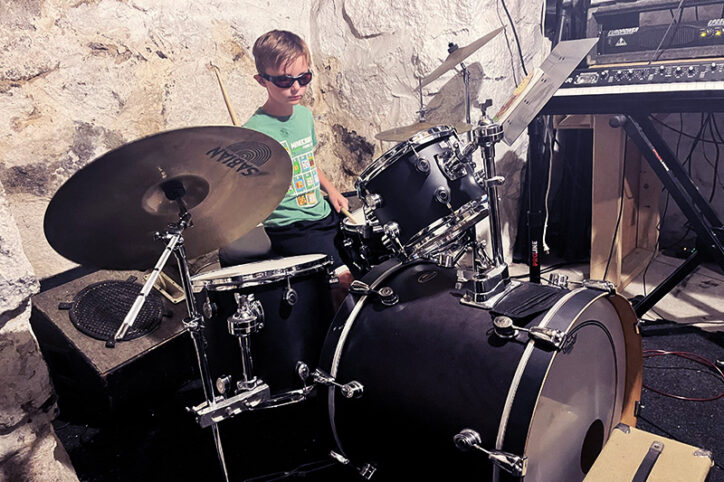
Chasing the promise of more outdoor time
Even before gene therapy, Aiden didn’t hold back. He made up for lost hours of outdoor time by skiing and playing soccer games at night under dimmer artificial lighting. Now that he spends more time outdoors in the daylight, he’ll continue pursuing both sports and he wants to add football to his list. He also enjoys playing video games with friends and watching Marvel and Star Wars movies. He follows the footsteps of his dad, Noah, with a love for drums, but he doesn’t like to practice. He’d rather play along when the music moves him.
Emily says that throughout all his appointments and the many adjustments he has made for limited vision, Aiden has never complained. Just once, not long after the gene therapy procedure, Aiden said he felt defeated, but he quickly rebounded. That’s because he’s excited about the promise of the therapy; he would even consider someday having the procedure on his left eye. The outdoors awaits.
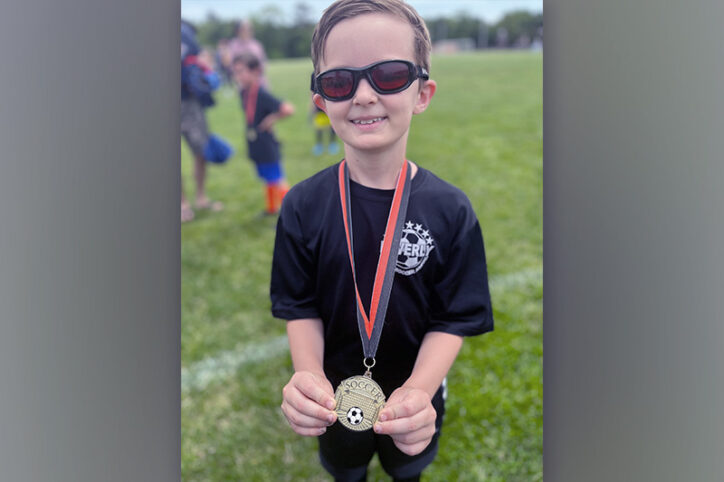
“It feels so cool to actually be out in the sun and be able to see what’s happening — seeing how much more there really is.”
Learn more about the Department of Ophthalmology or request a second opinion.
Related Posts :
-

Here's how genetic vision testing can help your family
At least 600 of the roughly 20,000 genes in the human body are needed for normal eyesight. Changes in those genes can ...
-

Pioneering trial offers hope for late treatment of ‘lazy eye’
In children with amblyopia or “lazy eye,” one eye is weaker than the other for any of a number of ...
-

All eyes on retinoblastoma: How Lyla and her mom are helping change lives
Meghan Landry firmly believes that art saved her daughter Lyla’s life. Now, she hopes to leverage the power of ...
-

Get a jump on potential eye conditions by having your child regularly tested
It can be surprising to learn your child has an eye condition. Children don’t always outwardly show symptoms of ...


